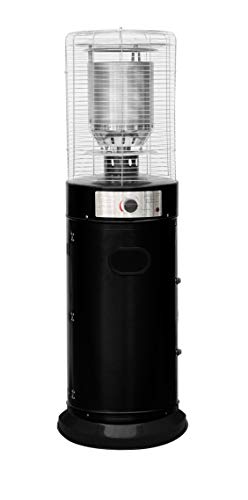Your Family Will Thank You For Having This Efficient Heaters

The Comprehensive Guide to Gas Patio Heaters
As outdoor living ends up being increasingly popular, gas patio heaters have actually become a vital component for extending the outdoor entertaining season. Whether for a comfortable night with good friends or a lively household gathering, these heaters provide warmth and comfort that can transform any outdoor space. This short article checks out the numerous elements of gas patio heaters, including their types, benefits, operational mechanics, maintenance suggestions, and considerations for purchasing one.
What is a Gas Patio Heater?
A gas patio heater is a type of heating home appliance developed specifically for outdoor usage. Typically sustained by propane or gas, these heaters produce warmth to fight the chill of the night air, enabling outdoor social activities to continue even under cooler temperature levels.
Types of Gas Patio Heaters
Gas patio heaters come in numerous different designs, each matched for different needs and looks. The typical types consist of:
Freestanding Heaters:
- These are the most typical type and are normally tall, with a large base and a heater component at the top.
- They can easily be moved and appropriate for various outdoor settings.
Tabletop Heaters:
- Smaller and more compact, tabletop heaters are developed to sit on tables or other surface areas.
- They offer warmth for smaller sized areas and are typically easier to save.
Wall-Mounted Heaters:
- These are fixed to a wall and are an excellent option for patios with limited space.
- They offer a more long-term heating service and can complement outdoor decoration.
Patio Fire Pits:
- While not exclusively heaters, gas fire pits supply heat and ambiance simultaneously.
- They can act as a centerpiece for outdoor events.
| Heater Type | Description | Best For |
|---|---|---|
| Freestanding | Tall, mobile systems with a heating aspect on top | Big open locations |
| Tabletop | Compact designs ideal for table surfaces | Little gatherings |
| Wall-Mounted | Fixed systems providing constant heat | Smaller sized patios |
| Patio Fire Pits | Combined heating and ornamental function | Ambiance and heat |
Advantages of Gas Patio Heaters
Investing in a gas patio heater uses many benefits:
- Extended Outdoor Enjoyment: Gas heaters permit property owners to enjoy their outdoor patios even throughout chillier months.
- Quick Heating Capability: Gas heaters warm up rapidly, providing instant relief from the chill.
- User-Friendly Operation: Most gas heaters include basic ignition controls for ease of use.
- Aesthetic Appeal: Many gas heaters are designed to be aesthetically enticing, boosting the total appearance of your outdoor space.
- Flexible Fuel Options: Availability of both propane and gas models deals with various needs and choices.
Functional Mechanics
Gas patio heaters run by transforming fuel into radiant heat. Here's a simplified breakdown of how they work:
- Fuel Source: Most gas heaters utilize propane or gas. The type of fuel impacts efficiency and schedule.
- Ignition System: Most models come with either a manual ignition (using a lighter or match) or an electronic ignition (push-button).
- Heating Element: Once fired up, gas flows through a burner, where it is combusted to create heat. Radiant heat spreads from the heating aspect.
- Heat Diffuser: Some heaters have a reflector to help distribute warmth more equally throughout a wider location.
Fuel Comparison
| Fuel Type | Pros | Cons |
|---|---|---|
| Propane | Portable, widely offered | Requires tank replacement/refill |
| Gas | Affordable if linked to a supply | Setup more complicated |
Maintenance Tips for Gas Patio Heaters
Correct care will extend the life of gas patio heaters. Here are some vital maintenance tips:
- Regular Cleaning: Keep the heater tidy from dirt and particles. Regularly clean down the surface areas.
- Inspect Gas Supply Lines: Check for leaks or cracks in the gas lines. Usage soapy water to discover leaks by observing bubbles.
- Seasonal Checks: Before using a heater, check all elements and repair work or replace any damaged parts.
- Storage: During off-seasons, save the heater in a dry location or cover it for defense.
- Expert Servicing: Consider a professional check-up every year, specifically for natural gas models.
Considerations When Purchasing a Gas Patio Heater
When picking a gas patio heater, keep the list below consider mind:
- Heating Capacity:
- Measured in BTUs, a greater BTU score supplies more heat.
- Size and Weight:
- Depending on the space offered and whether the heater needs to be portable.
- Product:
- Stainless steel heaters offer sturdiness and resistance to rust and deterioration.
- Design:
- Choose a design that matches your outdoor decor.
- Security Features:
- Look for automated shut-off features or safety tilt valves to avoid mishaps.
FAQs
Q: Are gas patio heaters safe to use?A: Yes
, when utilized according to the manufacturer's instructions and security standards, gas patio heaters are safe. Constantly ensure correct ventilation.
Q: How long can one propane tank last?A: A standard 20 lb
propane tank can last anywhere from 8 to 30 hours, depending upon the heat setting. Q: Can gas patio heaters be used indoors?A: No,
gas patio heaters are created for outdoor usage just due to the risk of carbon monoxide buildup in enclosed spaces. Q: Do gas patio heaters require assembly?A: Most freestanding models require standard assembly
, while tabletop and wall-mounted options might need more
particular assembly. visit my webpage are an appealing solution for those seeking to enhance their outdoor experiences throughout the year.
By comprehending the numerous types, advantages, and functional mechanics, prospective buyers can make informed decisions that align with their needs. Correct maintenance and safety considerations will ensure that these heaters remain efficient and safe, supplying comfort to outdoor events for many seasons to come. With cautious selection and care, a gas patio heater can become a precious addition to any outdoor living space.

